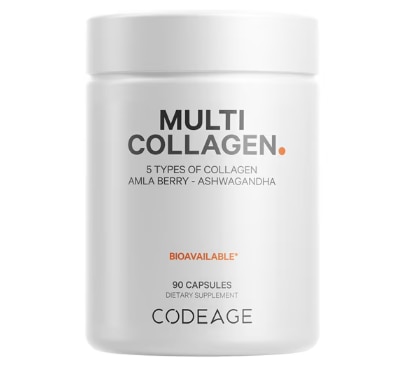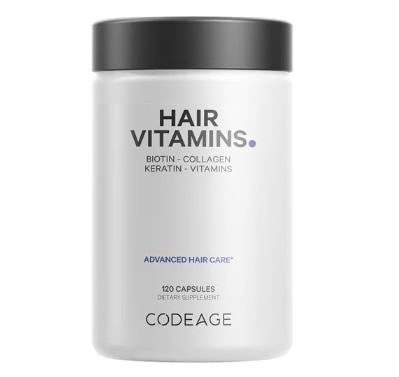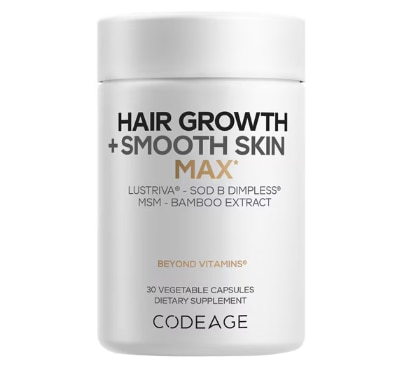Cellulite is one of those physical characteristics that gets a lot of attention in marketing and tabloids, often from an angle that promotes shame and embarrassment. But the truth is, cellulite is very common, and it doesn’t say a thing about your worth or your fitness.
There are many reasons cellulite shows up, including genetics, inflammation and lifestyle, and you can’t always get rid of it completely. But you can soften the look over time. The best cellulite treatments are small, steady habits that support smoother, stronger skin in ways that fit real life, like nutrition, exercise and limiting stress.
What is Cellulite?
Cellulite is a normal and incredibly common skin condition. So common, in fact, that nearly 90 percent of post-pubertal women will notice it at some point. It tends to show up as a dimpled or uneven texture, most often on the thighs, hips, and buttocks. These are areas where women naturally store more subcutaneous fat, which pushes up against the skin while bands of connective tissue pull down, creating visible surface tension.
But cellulite isn’t a sign of poor health, and it isn’t a disease. Dermatologists define it as a localized condition shaped by a mix of structural, hormonal, and genetic factors. Circulation, collagen integrity, and skin thickness all play a role in how it shows up and how much it shows.
How visible cellulite is can shift with changes in body composition, age, and even hydration levels. For some, it’s barely noticeable, but for others, it can be more obvious. In either case, it’s a natural variation in skin texture, not a flaw that needs fixing.
What Contributes to Cellulite?
Cellulite reflects how your body is built, plus hormones, genes and daily patterns. These influences overlap, so cellulite varies from person to person.
Skin structure: In females, the fibrous bands (septa) under the skin run in a way that makes dimpling more visible when fat cells expand. Thinner skin or lower collagen can make that unevenness stand out.
Circulation and lymphatic flow: When circulation slows or lymph drainage backs up, tissues can hold extra fluid, so dimples show more. Psychological stress can tighten blood vessels, limit nutrient delivery to the skin, and slow normal repair.
Inflammation and oxidative stress: Women with cellulite often show higher markers of oxidative stress in the skin and the layer beneath it. Ongoing psychological stress can raise cortisol and inflammatory cytokines, which weaken collagen and elastin while encouraging fat storage in dimple-prone areas.
Sedentary behavior: Long stretches of sitting reduce circulation and impair lymphatic return, so tissues get blocked up, making cellulite more visible.
Smoking and alcohol: Smoking breaks down collagen and thins skin, and frequently drinking alcohol can lead to fluid retention, which both lead to more visible cellulite.
Tight clothing: Very tight jeans or elastic hosiery can compress superficial lymph channels and make fluid retention worse.
What Can Help Reduce the Appearance of Cellulite
Cellulite is complex, but everyday habits can help. These approaches don’t “cure” cellulite, but they support circulation, skin integrity, and body composition so dimples look softer over time.
Stay active and build strength
Exercise supports blood flow and lymphatic return, develops the muscles under the skin for a smoother contour, and helps regulate body composition. Even light activity like calf raises, standing, or a quick walk each hour supports venous return and lymphatic flow, which will help keep tissues from becoming congested. Aim for 2–3 strength sessions weekly for glutes, legs and core, plus daily walking and short stretch breaks.
Anti-inflammatory diet and hydration
Center meals on fruits, vegetables, legumes, fish, olive oil, nuts and whole grains, which provide antioxidants and polyphenols that help protect collagen and support healthy circulation and might even improve skin thickness and quality.
Staying hydrated won’t restructure connective tissue, but keeping on top of your intake supports skin elasticity and smoothness, so dimples can look less pronounced.
Sleep and stress care
Chronic stress raises cortisol, which can break down collagen, impair microcirculation and promote fat storage. Be sure to get consistent sleep and adopt simple stress practices (breathwork, yoga, mindfulness) to help balance hormones and support your skin.
Topicals and hands-on care
Caffeine- or retinol-based body products, massage and cupping can boost circulation in the short term and refine skin texture, but you need to do this regularly to keep seeing modest results.
Limit smoking, alcohol and tight clothing
Quit smoking and limit alcohol to improve collagen and fluid balance. Avoiding tight clothes can help with circulation and lymphatic flow, so your tissues don’t get congested and show dimpling more readily.
Consider a supplement
Alongside solid lifestyle habits, consider exploring supplements that support skin health. One option is Codeage Hair Growth + Smooth Skin MAX, which features vitamin C, MSM, hyaluronic acid, silica and a fermented antioxidant extract from melon (SOD B Dimpless®).
Vitamin C contributes to normal collagen formation while silica, MSM & hyaluronic acid support connective tissue structure and hydration. SOD B Dimpless® was shown in a small clinical trial to have measurable improvements in thigh skin appearance after 8 weeks of daily use. The findings are preliminary, and more research is needed.
As with all supplements, results vary. You’ll see the best payoff when you pair them with consistent habits like balanced eating, regular movement, and stress care. If you’re pregnant, nursing, have a medical condition or take medication, check with a qualified healthcare professional before giving it a try.
What to Remember About Cellulite
Most women notice cellulite at some point, and it isn’t a marker of poor health. You can’t fully remove it, but you can help it look softer by strengthening skin, supporting circulation and dialing down inflammation. Move most days, lift 2–3 times per week, eat a colorful, fiber-rich mix, stay hydrated, manage stress and protect your sleep. Supportive add-ons like Codeage Hair Growth + Smooth Skin MAX can complement (not replace) those habits. Above all, care for your body in ways that build both health and confidence.




